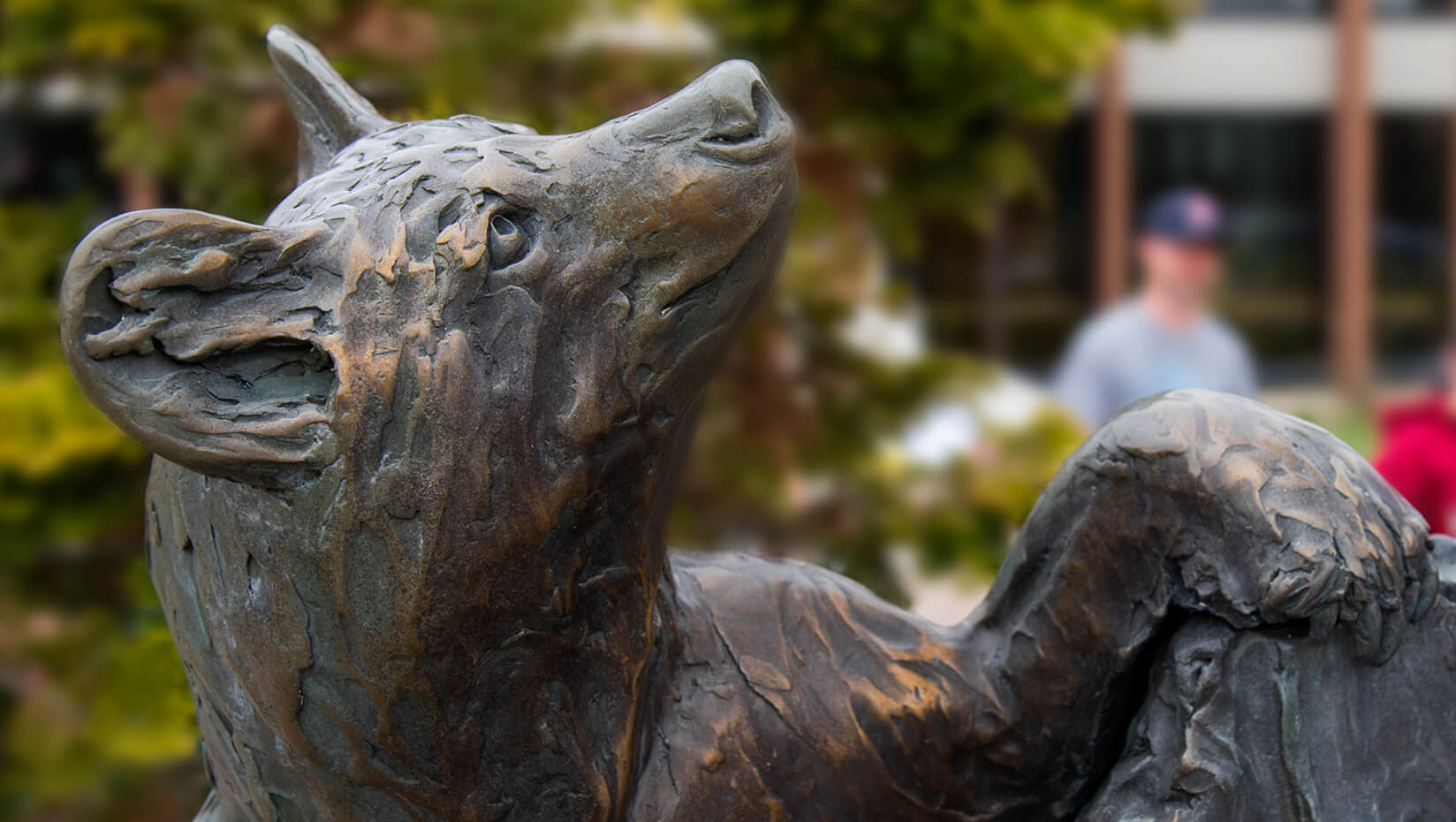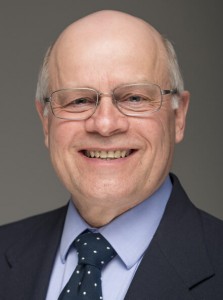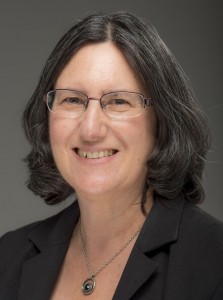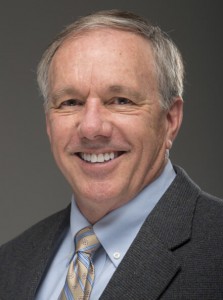
UMaine’s 2016 Presidential Achievement Award winners
Faculty members in marine sciences, engineering technology and political science have been named recipients of Presidential Achievement Awards, the University of Maine’s top honors.
Howard M. “Mac” Gray, professor of construction engineering technology, will receive the 2016 Presidential Outstanding Teaching Award; Neal R. Pettigrew, professor of oceanography, will receive the 2016 Presidential Research and Creative Achievement Award; and Amy Fried, professor of political science, will receive the 2016 Presidential Public Service Achievement Award.
All three awards will be presented at the President’s Faculty Recognition Luncheon May 14.
 Gray has consistently had some of the highest student evaluations in the School of Engineering Technology, reflecting his innovative teaching style, knowledge and relevant experience and motivation. Whether teaching structural design, building construction, soil mechanics and foundations, or any of his other courses, students cite the effectiveness of his teaching methods, including bringing his experience to bear on theoretical lessons in the classroom, and using technology to enhance the learning environment. They also note his compassion, patience and genuine caring for students and their success.
Gray has consistently had some of the highest student evaluations in the School of Engineering Technology, reflecting his innovative teaching style, knowledge and relevant experience and motivation. Whether teaching structural design, building construction, soil mechanics and foundations, or any of his other courses, students cite the effectiveness of his teaching methods, including bringing his experience to bear on theoretical lessons in the classroom, and using technology to enhance the learning environment. They also note his compassion, patience and genuine caring for students and their success.
Gray’s teaching has a memorable, positive and commendable impact on graduates. Student success and retention result from his outstanding teaching and mentoring. Alumni surveyed note that Gray’s ability to effectively teach complex, technical subjects has far-reaching, positive impact on their employment and advancement in their professional careers.
Most of Gray’s former students are managers or leaders in the profession; many now own and operate their own firms, the majority of which are in Maine.
During his tenure as coordinator of the Construction Management Technology Program, 1987–2011, enrollment quadrupled. He also was instrumental in developing the bachelor’s degree program in construction management technology.
Gray is a cooperating professor with UMaine’s Advanced Structures and Composites Center. Since 2002, he also has been a peer consultant in UMaine’s Center for Teaching Excellence. His research led to a patent awarded in 2011, “Slip Method for Prestressing Beams with Bonded Tendons.”
Gray received bachelor’s and master’s degrees from UMaine, and joined the faculty in 1981. His industry experience as a licensed professional engineer includes five years as a structural design engineer for Chicago Bridge & Iron Co., Oak Brook, Illinois.
 Fried’s accomplishments range from extensive local and statewide community engagement to significant national and international service.
Fried’s accomplishments range from extensive local and statewide community engagement to significant national and international service.
Fried was a co-principal investigator on the $3.3 million National Science Foundation grant that established the ADVANCE Rising Tide Center at UMaine in 2010. The initiative aims to transform the university by increasing the recruitment, retention and advancement of women faculty members in science, technology, engineering, mathematics and social-behavioral sciences. While engaged in all aspects, Fried’s work focused on work-life policies affecting all faculty.
As co-chair of the Environment Committee of Faculty Senate, Fried negotiated policies on faculty work-family balance that were ultimately implemented across the University of Maine System campuses.
Her active involvement in the Department of Political Science includes serving as the UMaine coordinator of the Maine Policy Scholars Program, a project funded by the Maine Community Foundation. Fried developed curricula requiring students to engage in civic action such as volunteering for a nonpartisan campaign effort or political campaign or writing to a newspaper or elected official. She is the faculty adviser to the UMaine College Republicans.
Beyond campus, Fried co-directs the Maine chapter of Scholars Strategy Network and served on the board of the New England Political Science Association.
Fried, the author of three books and numerous scholarly articles, is an internationally recognized expert on American politics, particularly the history and political uses of public opinion. For the media, she is a sought-after authority on public opinion and polling, elections and voting, same-sex marriage debates, Maine politics and health care.
Since 2011, she has written a biweekly column on public affairs, published by the Bangor Daily News. In 2013, “Pollways,” was the runner-up for the Maine Press Association’s award for best news blog.
She combines her extensive media commentary with public outreach, speaking frequently to civic and school groups. In 2012, Fried was recruited by the U.S. State Department to meet with and give presentations to leaders, scholars and citizens in Montenegro during the week of the presidential election.
Fried joined the UMaine political science faculty in 1997. From 2007–10, she served as associate dean of the College of Liberal Arts and Sciences.
Fried received a Ph.D. in political science from the University of Minnesota.
 Pettigrew is the director of UMaine’s Physical Oceanography Group, the University of Maine Ocean Observing System, and the Maine Center for Autonomous Marine Surveys. As a physical oceanographer, he specializes in the circulation and physical processes in coastal seas, gulfs, continental shelves, straits, coastal embayments and estuaries.
Pettigrew is the director of UMaine’s Physical Oceanography Group, the University of Maine Ocean Observing System, and the Maine Center for Autonomous Marine Surveys. As a physical oceanographer, he specializes in the circulation and physical processes in coastal seas, gulfs, continental shelves, straits, coastal embayments and estuaries.
Pettigrew is internationally recognized for his research group’s innovative surface data buoy designs that became the nation’s first coastal ocean observing system. His research over the past quarter-century has been funded by more than $40 million in extramural grants.
Pettigrew has a Ph.D. in physical oceanography from the joint program in oceanography of the Massachusetts Institute of Technology and the Woods Hole Oceanographic Institution. Early in his career, with his first research grant from NASA, Pettigrew was instrumental in the development of the Acoustic Doppler Current Profiler (ADCP). ADCP is a remote current sensor based on the Doppler frequency shift of short acoustic beams scattered back to the ADCP from particles in the moving waters. After making improvements of the techniques to calculate current profiles in conditions of tilted and oscillating ADCPs, extensive validation of the RDI ADCP was field tested in comparison to the best current meter buoys in the Coastal Ocean Dynamics Experiment.
ADCP is currently the internationally preferred instrument and technique for obtaining the accurate measurements of water currents at multiple depths in a water column. Pettigrew first employed the ADCPs in an ONR grant-funded experiment that resulted in significant contributions to increased understanding of the exchange of waters between the Mediterranean Sea and the North Atlantic Ocean through the Strait of Gibraltar.
Pettigrew joined the UMaine community in 1991 and launched an oceanographic research program based on moored sensors to study the oceanography of the eastern Gulf of Maine. With funding from NOAA, he and his research team designed and built a system of oceanographic buoys that were deployed in the Gulf of Maine, producing first-of-their-kind data and information about ocean temperatures, salinities and currents. The data enabled the documentation and modeling of the interconnected Eastern Maine Coastal Current and Jordan Basin gyre that controls biological productivity for much of the Gulf of Maine.
Starting in the middle 1990s, Pettigrew’s research group developed and deployed a small-scale coastal observing system in Penobscot Bay using cell phones to report data every few hours. The Penobscot Bay Circulation Program was lauded by the USCG, Penobscot Pilots and commercial fishermen for the system’s novel real-time condition reporting. In addition, the data from the moored sensors led to new hypotheses about why outer western portions of the bay produced more lobsters than anywhere else on the Maine coast.
Pettigrew was the founding chief scientist of the Gulf of Maine Ocean Observing System (GoMOOS), the first regional ocean observing system featuring a series of instrumented buoys deployed in the gulf from Nova Scotia to Massachusetts Bay, measuring water temperatures, salinities, dissolved oxygen, current profiles, an array of optical sensors profiles, significant wave heights and periods, fog and other meteorological variables. The buoys, designed, fabricated and maintained by Pettigrew’s team of oceanographers, engineers, computer programmers and research associates, have been transmitting real-time data since 2001.
Now known as UMOOS, the University of Maine Ocean Observing System is part of the Northeastern Regional Association of Coastal Ocean Observing Systems (NERACOOS) providing observations of circulation and ocean conditions in the Gulf of Maine for those who make their livings on the water. This information informs weather forecasters and modelers, and provides data that is integral to ongoing research — from studies of fish populations, ocean climate and ocean acidification to harmful algal blooms. Pettigrew also oversees a buoy array in the Caribbean Coastal Ocean Observing System (CARICOOS).
Pettigrew and his research group are currently developing small storm data buoys that are designed to be deployed before landfalls by hurricanes or northeasters, in coastal regions endangered by inundation and flooding. This project was funded by NOAA in response to the damage caused by Hurricane Sandy in 2012.
Early results indicate that the storm buoys, which measure storm waves and storm surges, have significantly improved predictions of catastrophic storm inundation events. In addition, the Physical Oceanography Group is developing sensors and techniques that improve autonomous undersea glider operations in both storms and as an important component of ocean observing systems by providing spatial variations of ocean conditions between the fixed locations of data buoy arrays.
Contact: Margaret Nagle, 207.581.3745
